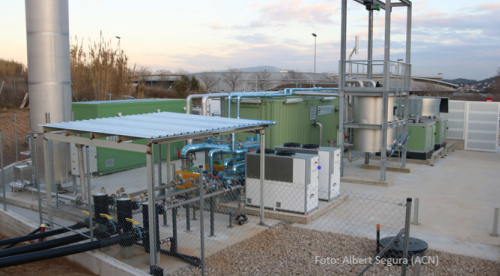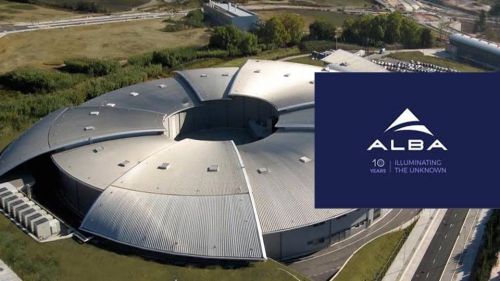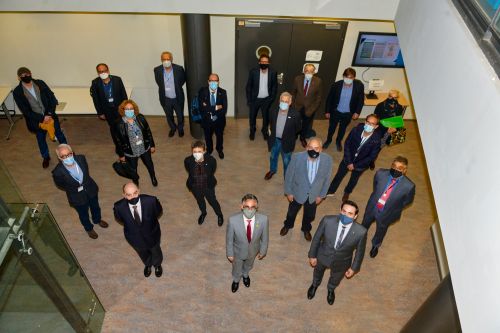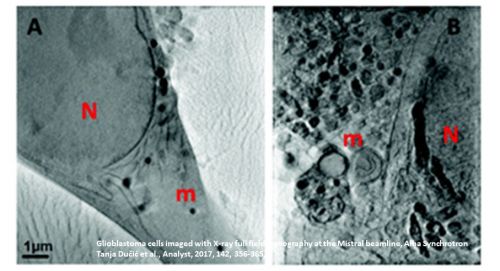News

Institutional visit to the Elena Renewable Gas Plant in Parc de l'Alba
In Parc de l'Alba between 2007 and 2011, an excavation made as the result of a former clay extraction activity was used to store waste bales from Barcelona Metropolitan Area waste recovery plants.
The energy company Naturgy is finalising the implementation of a pioneering project in Spain, within the framework of the circular economy, to make use of the biogas produced by this deposit resulting from the decomposition of the organic matter present in the waste. This is the Elena Renewable Gas Plant, a facility capable of collecting the methane present in the biogas and injecting it into the natural gas distribution network, thus using the waste as an energy resource and at the same time avoiding its emission into the atmosphere.
The company points out that the Parc de l'Alba facility will be able to inject 12 GWh/year into the grid, equivalent to the consumption of 3,200 homes with natural gas, and will prevent the emission into the atmosphere of approximately 2,500 tonnes of CO2/year, equivalent to planting some 5,000 trees.
The institutional visit to the new plant took place last week and was attended by the CEO of Nedgia (Naturgy's gas distribution company), Narcís de Carreras; the Catalan Minister of Business and Knowledge, Ramon Tremosa; the Director General of Energy, Industrial Safety and Mining Safety, Manel Torrent; the Mayor of Cerdanyola del Vallès, Carlos Cordón; and the Director of the Parc de l'Alba, Pere Solà.

2021: the Alba synchrotron begins its mutation
The 4th generation synchrotrons, compared to the 3rd generation ones, produce a much brighter beam of light with better coherence properties, providing matter analysis capabilities that are now inaccessible in terms of resolution, detection level and understanding of matter properties.
The ALBA II project envisages the transformation of the ALBA Synchrotron from 3rd to 4th generation through the partial replacement of its accelerator, the construction of new experimental beam lines and the upgrading of some components of the existing beam lines.
The design and construction of the ALBA II project will be carried out between 2021 and 2028, maintaining the current operation of the ALBA synchrotron. A technical shutdown is planned between 2029 and 2030 to install and test the new components, and research activity will resume in 2031.
Since its inauguration in 2010, the ALBA synchrotron has consolidated itself as an exceptional tool for science with more than 1,500 experiments published in over 1,300 articles in specialized magazines. The ALBA II project represents a leap forward that will allow this infrastructure to continue at the forefront of science, technology and innovation.
 HD_W_500.JPG)
The Park has a new Urban Development Master Plan
The aim of this PDU is to offer a new modern regulatory framework, especially adapted to the location of innovative companies and research centers next to the campus of the Universitat Autònoma de Barcelona, within the territory of the Vallès, and the creation of a new city space that is cohesive with the existing one: a park to live and work. All this, while recovering, preserving and enhancing at the same time the natural spaces located within its area, with a commitment to sustainability: large green areas, biological connectors, soil recovery and improved mobility.
The Parc de l’Alba is a 408-hectare public park - a consortium between the Catalan government and the Cerdanyola City Council - with 3 areas for 3 missions:
• Attracting innovative companies around the ALBA synchrotron, in the business area known as Barcelona Synchrotron Park (1.39 million m2 of floor area).
• Creating a new residential neighborhood (5,377 apartments, 47% of which corresponding to social housing).
• Protecting biodiversity in the green areas that represent 41% of the 408 hectares.

The director of Parc de l'Alba, Pere Solà, academic director of the new Postgraduate Course in Urban Planning and Health at the UPC School
The new context requires transversal professionals, specialists in the integration of the various urban aspects that produce an impact on people's health: from mobility to biodiversity, including the design of public space.
It is within this framework that the UPC School, in collaboration with the University of Vic - Central University of Catalonia, presents the new postgraduate degree in Urbanism and Health: Urban Planning as a Health Tool focused on the relationships between health and urban environment with a transversal and innovative approach.
The academic director of this degree is Pere Solà, architect from the UPC (ETSAB), awarded the 1987 Spanish National Urbanism Prize and the 2020 Catalonia Urbanism Prize, and currently director of the Parc de l'Alba / Barcelona Synchrotron Park. He is accompanied by a large and multidisciplinary team formed by professors and specialists in various disciplines (architects, biologists, environmentalologists, geologists, engineers, geographers, physicists ...), including Consol Pérez, head of the Environment Department at Parc de l’Alba, as coordinator and teacher.
More information on the UPC School website (in Catalan and Spanish)

Catalan minister Ramon Tremosa visits the ALBA synchrotron and announces the creation of a public-private investment fund to improve knowledge transfer
The minister made this announcement during his visit to the Alba synchrotron, the large scientific and technological infrastructure located in the centre of the Barcelona Synchrotron Park, which is a fundamental value in the development of cutting-edge research and, in short, a driving force for the country's economy. The director of the synchrotron, Caterina Biscari, the director of our park, Pere Solà, along with several heads of other research centers in the area, accompanied the Minister.
The Government plans to invest 10 million euros between 2021 and 2022, a figure that can be increased to 30 million through possible contributions from European Next Generation funds.
The minister pointed out that the most advanced countries in the world have public-private funds of this type, specialized in high technology, which initially promote the projects and that, once the initial stages have been overcome and the business opportunity identified, private capital enters in large quantities and the public sector recovers its participation.
Source: Catalan government press release
Image: Alba Synchrotron

Catalonia, at the forefront of Europe in life sciences and health; the Alba synchrotron contributes to this leadership
The Alba synchrotron, the icon of our park, contributes to this leadership as a top-level scientific infrastructure (along with the BSC-CNS MareNostrum supercomputer and the CNAG-CRG National Center for Genome Analysis) dedicated to cutting-edge research and technological development in the field of life sciences and health, among others.
For instance, the synchrotron can probe the interior structure of biological samples, such as cells, and produce 2D or 3D representations and pictures with high-resolution and contrast (see photo).
Catalonia concentrates more than 50% of the Spanish pharmaceutical industry, is home to five of the largest companies in the sector (Almirall, Esteve, Ferrer, Grífols and Uriach) and major global multinationals such as Amgen from the US. Companies such as Roche Diagnostics, Boehringer Ingelheim, AstraZeneca, Sanofi and Novartis have established their production and innovation centers in the region. This region is home to more than 1,200 companies in the field of life sciences and health, mainly biotech and pharma, digital health and medtech. The sector represents 7.3 % of the Catalan GDP, the second highest in turnover after the automotive sector, and has grown steadily since 2010.
On the other hand, Catalonia has 89 leading scientific, technical and research centers working in the health, wellness and life sciences industries. It also has internationally renowned hospitals that carry out innovative work in different medical fields, such as the Vall d’Hebron Hospital, Clínic Hospital, Sant Joan de Déu Hospital, Quiron Hospital, etc.
Biocat points out that this year there has been a new record investment: € 120 million so far in 2020, surpassing the total reached in 2019. Venture capital with international participation has increased by 67.1 % and exceeds € 50 million for the first time. In fact, according to fDi Markets, Catalonia remains from 2016 as the best region in southern Europe for foreign investment.









